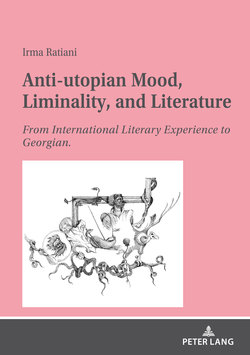Читать книгу Anti-utopian Mood, Liminality, and Literature - Irma Ratiani - Страница 8
На сайте Литреса книга снята с продажи.
ОглавлениеTable of Contents
Acknowledgements
Introduction
Chapter One. Literary Anti-Utopia and the General Trends of Its Development
1.1. Utopia. Ou Topos or Eu Topos?
1.2. Utopia and Anti-Utopia – from Ambivalent Unity to Conceptual Determination
1.3. The Philosophical and Literary Predecessors of Anti-Utopian Genre
Chapter Two. Theoretical and Methodological Approaches toward the Study of Literary Anti-Utopia
2.1. Evolution of Genre Theory and the Holistic Method
2.2. Genre Peculiarities of Anti-Utopian Text
2.3. Time-Space Hypotheses, and Anti-Utopia in Eschatological Perspective
2.4. Liminality and the Liminal Theory of Conceptualization of Time and Space
Chapter Three. Liminal Models of Chronotope in 20th-Century Eschatological Anti-Utopia: Vladimir Nabokov’s – “Invitation to a Beheading” and “Bend Sinister”, and Mikheil Javakhishvili’s “Jaqo’s Dispossessed”
3.1. The Subjective Paradigm of Conceptualization of Time
3.2. Liminal Models of Artistic Time and Space and Their Genre-Determining Function
3.2.1. Invitation to a Beheading
3.2.2. Bend Sinister
3.2.3. Jaqo’s Dispossessed
Brief Conclusions
References
Index
